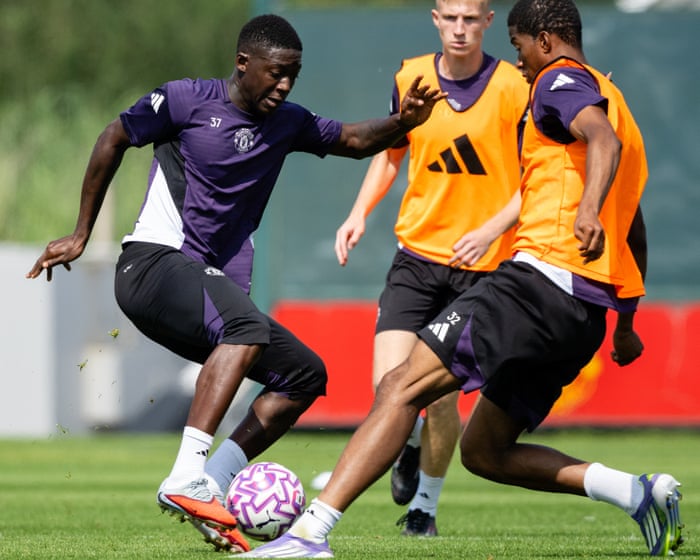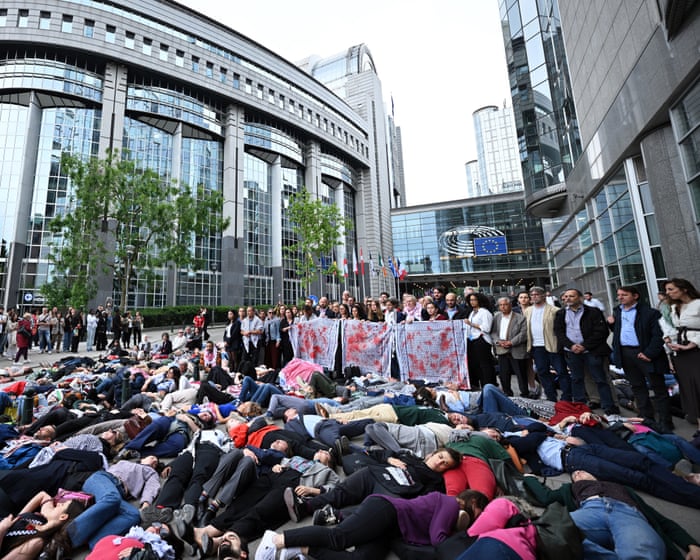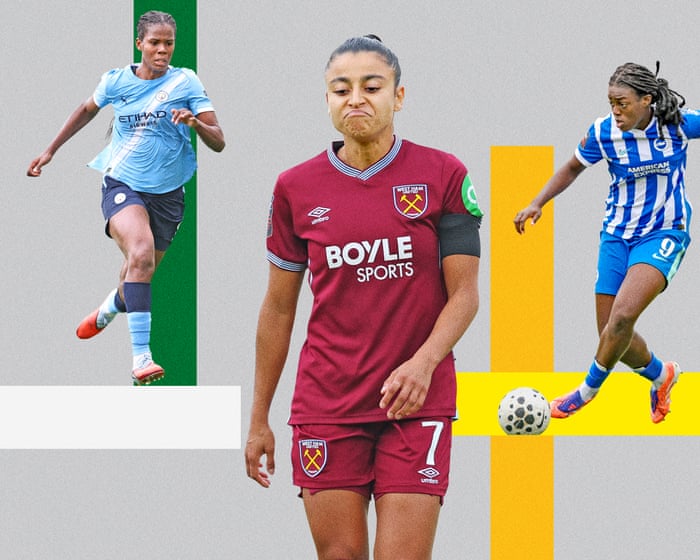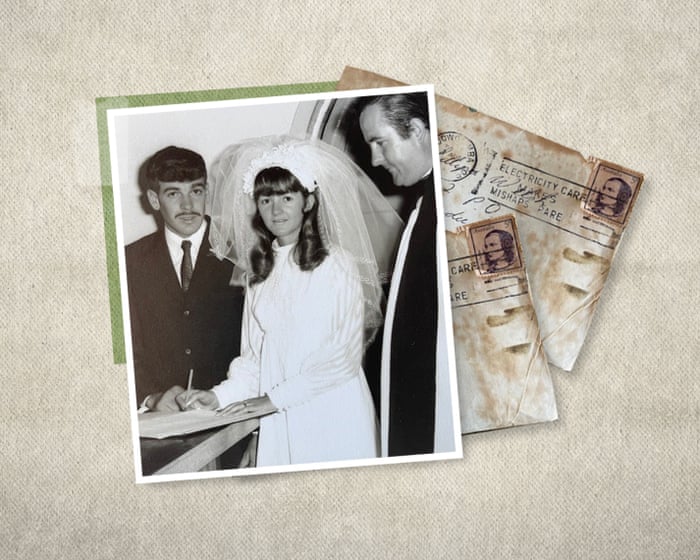Remember Kobbie Mainoo? The young talent from Stockport who was hailed as Manchester United’s next midfield star? At just 19, Paul Scholes compared him to Zinedine Zidane, and his winning goal in the 2024 FA Cup final silenced Manchester City as he glided past their defense with a smooth finish past Ederson.
But now, at a club that has seen countless false promises and no real title challenge since Sir Alex Ferguson retired 12 years ago, Mainoo finds himself at a crossroads. With Ruben Amorim taking over as the latest manager tasked with rebuilding United, Mainoo has been reduced to a substitute role. Amorim’s 3-4-3 system has no place for him, with the Portuguese coach claiming Mainoo lacks the stamina for midfield or the speed to play as one of the two attacking midfielders.
Rewind to last August, just after Mainoo’s FA Cup heroics and his standout performances for England at the Euros, and Scholes’ praise feels almost surreal. “He’s the closest thing I’ve seen to Zidane in how he controls the ball, glides past players,” Scholes said. “The first time I saw him, I was struck by his composure. For such a young player to play with that confidence was unbelievable.”
That confidence and calmness should be perfect for a midfielder in today’s high-intensity game, where matches are won and lost in the middle of the park. But Amorim doesn’t see it that way—at least not with Mainoo. As the transfer window neared its end, the manager chased Brighton’s Carlos Baleba to fill the gap left by his lack of faith in Mainoo.
“We lack pace in midfield, and it’s hurting our ability to control games,” Amorim said bluntly after a dull 0-0 draw with Leeds in Stockholm on July 19. Mainoo, who came on at halftime for Bruno Fernandes, failed to change his mind. United even explored a move for Baleba, but Brighton’s £100m asking price for the 21-year-old made them back off. Brighton’s manager, Fabian Hürzeler, later confirmed Baleba was staying.
Amorim may now turn to other options, like his former Sporting captain Morten Hjulmand. But his transfer strategy this summer has raised eyebrows. Signing two attacking midfielders (Matheus Cunha and Bryan Mbeumo) and a striker (Benjamin Sesko) for over £200m, while neglecting the midfield’s lack of pace, seems unbalanced—especially with Arsenal visiting Old Trafford for the season opener.
How United’s midfield holds up against a title contender will show just how urgent their remaining transfer business is. Spending big on attacking talent while leaving the heart of the team weak could be a costly mistake for Amorim, director of football Jason Wilcox, CEO Omar Berrada, and owner Jim Ratcliffe. The clock is ticking.Manchester United’s rivals all face the same challenge in the transfer market, but not all have United’s financial power to attract top talent with high salaries.
The bigger concern is how United’s midfield has been a problem for some time. This issue dates back to last Christmas when manager Ruben Amorim decided Kobbie Mainoo couldn’t handle the physical demands of playing box-to-box—a surprising assessment given Mainoo had been a regular starter under Erik ten Hag and even started for England in the Euro 2024 final against Spain.
This season, Amorim has three new forwards at his disposal, costing over £200m, but midfield remains a weak spot.
Mainoo missed 83 days last season due to two separate muscle injuries. The first (October 17–November 11) coincided with Amorim’s appointment, and the second (February 10–April 7) saw him relegated to the bench.
By May, Mainoo was left watching as an aging, slow Casemiro started in the Europa League final defeat to Tottenham—another clear sign of Amorim’s doubts, which began when he experimented with Mainoo’s position mid-season.
In January, Mainoo played as a No. 10 alongside Christian Eriksen in a Europa League win over FCSB, scoring in the process. But the following week, he was deployed as a false nine in a 2-0 loss to Crystal Palace before being subbed off. Five days later, back as a No. 10 in a cup win over Leicester, he lasted just 64 minutes.
After his second injury, contract talks stalled—Mainoo wants £180,000 a week, while United have offered around £100,000—and the club became open to selling him. He started only four of United’s final 12 games, none in the Europa League, Amorim’s priority competition.
Now, with Bruno Fernandes and Manuel Ugarte ahead of him in midfield (plus possibly Casemiro), and Matheus Cunha/Bryan Mbeumo preferred as attacking midfielders, Mainoo faces an uphill battle to regain his starting spot.
When discussing new signing Benjamin Šeško, Amorim said: “First of all, physically he’s ready. That’s a big factor in our league.” Mainoo must wish the manager saw him the same way.
FAQS
### **FAQs About “From ‘the Next Zidane’ to Amorim’s Outcast: Kobbie Mainoo Faces a Career Turning Point”**
#### **Beginner-Level Questions**
1. **Who is Kobbie Mainoo?**
Kobbie Mainoo is a young English footballer who plays as a midfielder, previously hailed as a rising star with comparisons to Zinedine Zidane.
2. **Why was Mainoo called “the next Zidane”?**
Due to his technical skills, composure, and playing style, analysts and fans drew early comparisons to French legend Zinedine Zidane.
3. **What does “Amorim’s outcast” mean?**
It refers to Mainoo reportedly falling out of favor under manager Rúben Amorim, possibly due to form, tactics, or off-field issues.
4. **Is Mainoo still playing for his club?**
As of now, reports suggest he’s struggling for playing time, but his status depends on the manager’s decisions.
5. **What position does Mainoo play?**
He primarily plays as a central midfielder but can also operate in attacking or defensive midfield roles.
—
#### **Advanced-Level Questions**
6. **What led to Mainoo’s decline in form or favor?**
Possible reasons include injuries, tactical mismatches, competition for places, or struggles to adapt at a higher level.
7. **Which clubs were interested in Mainoo before his downturn?**
Top European clubs reportedly monitored him during his rise, but interest may have cooled due to recent struggles.
8. **Could a loan move help revive Mainoo’s career?**
Yes, regular playing time at a club with a suitable playstyle could help him regain confidence and form.
9. **How does Mainoo compare to other young midfielders like Jude Bellingham?**
While highly rated, Mainoo hasn’t yet reached Bellingham’s consistency or impact at the elite level.
10. **What should Mainoo do to turn his career around?**
– Work on consistency and adaptability.
– Seek a loan or transfer if frozen out.
– Focus on mental resilience and physical conditioning.
Would you like any additional details on his playing style or potential next steps?




